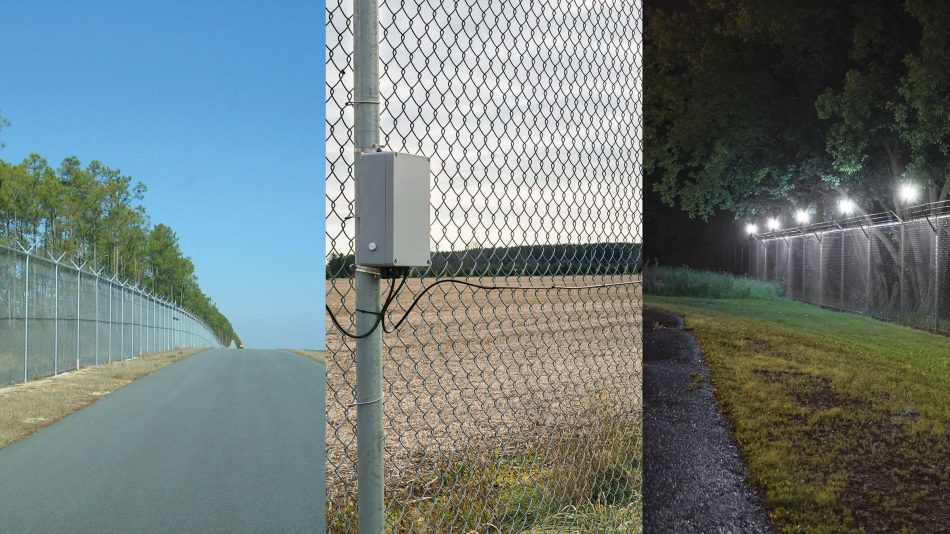Top Reasons a Fiber Security System Outperforms Traditional Security Systems
Wiki Article
Secure Your Property With Trustworthy Fiber Optic Safety Solutions
In an era where security threats are significantly sophisticated, the demand for effective defense remedies is paramount. Fiber optic protection systems stand out by providing extraordinary dependability and performance, leveraging advanced light transmission modern technology to boost security abilities. security fibers. Understanding the intricacies of fiber optic protection can brighten the path to safeguarding your residential or commercial property extra effectively.Benefits of Fiber Optic Safety
Fiber optic safety and security solutions supply a series of benefits that make them increasingly important in today's electronic landscape. One of the most substantial benefits is their remarkable data transfer capacity, which enables the transmission of big amounts of information over cross countries without substantial signal destruction. This ability is particularly useful for safety and security systems that depend on high-def video clip monitoring and real-time monitoring.Furthermore, fiber optic cables are naturally more safe than traditional copper electrical wiring. They are immune to electromagnetic disturbance, making them less prone to hacking or eavesdropping. This boosted safety is critical for shielding sensitive information and keeping the integrity of monitoring systems.
In addition, fiber optics are much more long lasting and resistant to ecological factors, such as wetness and temperature level variations, making sure long-lasting integrity and reduced maintenance expenses. The light-weight nature of fiber optic wires likewise simplifies installment processes, enabling higher versatility in system layout.
Exactly How Fiber Optic Systems Work
In contemporary safety and security applications, the operation of fiber optic systems relies on the principles of light transmission through flexible glass or plastic fibers. These fibers are designed to carry light signals over fars away with marginal loss, making them suitable for transmitting data connected to safety tracking. The core of the fiber, surrounded by a cladding product, ensures that light signals stay had within the core through a sensation referred to as complete internal reflection.
When integrated right into safety systems, fiber optic cable televisions can transfer data from different sensors, such as electronic cameras, movement detectors, and alarms, to a main monitoring station. The high bandwidth ability of optical fiber allows for the transmission of huge amounts of information concurrently, allowing real-time security and timely action to possible risks.

Sorts Of Fiber Optic Safety And Security Solutions
Various types of fiber optic security options have emerged to boost monitoring and defense across various settings. One popular remedy is fiber optic boundary breach detection systems (PIDS), created to monitor and protect residential property limits via the detection of resonances and disruptions along fiber optic cables. These systems supply real-time alerts, enabling punctual responses to unapproved gain access to efforts.An additional effective service is fiber optic video clip security. This modern technology leverages high-definition video cameras linked using fiber optic cables to transfer video information over cross countries without considerable loss of high quality. This arrangement is particularly useful in large locations, such as airport terminals and industrial sites, where traditional copper cables may falter.
Additionally, fiber optic sensors are increasingly used for environmental tracking, finding adjustments in temperature, pressure, or acoustic signals that might suggest safety and security breaches or dangerous conditions. These sensors provide high sensitivity and accuracy, making them perfect for vital facilities security.

Installment and Upkeep Tips
Efficient installation and upkeep of fiber optic safety and security fiber security solutions are critical for ensuring their optimal efficiency and longevity. Fiber optic wires ought to be transmitted safely, avoiding sharp bends or spins that could jeopardize their integrity.During installation, it is a good idea to conduct complete screening of the system to confirm that all elements are functioning properly. Regular maintenance checks need to be scheduled to evaluate the fiber optic cable televisions for any kind of signs of wear or damage, along with to guarantee that links remain protected. Cleansing the connectors regularly is additionally vital to stop signal loss due to dirt or particles.
Furthermore, keeping an upgraded supply of installed elements and their requirements can facilitate easier troubleshooting and upgrades. By sticking to these setup and maintenance suggestions, residential property owners can make the most of the efficiency of their fiber optic safety remedies, ensuring a trustworthy protection versus possible hazards.
Comparing Expenses and Efficiency
When examining fiber optic protection remedies, understanding the balance between costs and effectiveness ends up being paramount (security fibers). Organizations must consider the upfront investment, ongoing upkeep expenditures, and the lasting worth these systems supply. While fiber optic systems may need a higher preliminary setup expense compared to conventional copper electrical wiring, their sturdiness and decreased vulnerability to electromagnetic interference frequently translate to lower upkeep expenses in timeEffectiveness is another essential element; fiber optic protection systems supply improved data transmission rates and boosted reliability. They can cover bigger distances without signal degradation, making them perfect for extensive residential or commercial properties or remote areas. The high bandwidth ability supports innovative safety applications, such as high-definition video clip surveillance and real-time monitoring, which are crucial for detailed security administration.
Ultimately, the option in between expense and performance ought to be assisted by certain safety and security demands and run the risk of evaluations. Organizations should assess their unique demands, taking into consideration elements like property size, safety and security risks, and technical advancements. By carrying out a detailed cost-benefit analysis, stakeholders can make educated choices that straighten with their security goals while making sure a sound investment in fiber optic technology.
Final Thought
In final thought, fiber optic safety solutions offer significant advantages in terms of efficiency, dependability, and resistance to ecological disturbances. These systems improve surveillance capabilities and boundary safety, making them an efficient option for thorough defense. Preliminary installation prices might be higher, the long-lasting benefits, including reduced upkeep and premium capability, validate the investment. Inevitably, the adoption of fiber optic technology stands for a forward-thinking method to securing buildings versus advancing safety risks.Report this wiki page